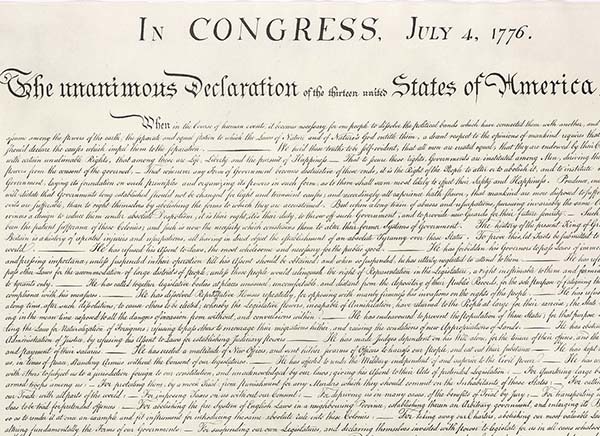

What makes a revolution possible? Values, beliefs, grievances, and solutions formed a potent mixture that made the American Revolution happen. In this lesson, students use a variety of materials to learn about the making of the Declaration of Independence. The lesson culminates in students recreating the Declaration in their own words, or making their own personal declaration of independence.
This Lesson Plan was created to use in conjunction with materials in Clusive [https://clusive.cast.org], a free, online learning environment that makes materials flexible and accessible.
Name the lesson so that you and others can quickly find and use it.
Consider the barriers that you can reduce; provide choice and options for the materials that students may use, for example.
Briefly describe the lesson topic, what students will be doing in this lesson, and why.
Many people in the American Colonies felt that King George III was not a fair ruler. After the Boston Tea Party, negative feelings against the King and the English Parliament grew. Eventually, colonists banded together and wrote the Declaration of Independence, declaring the American colonies free and independent from England.
In this lesson, you will learn how the Declaration of Independence was written. You'll learn who the key people were who made the Declaration. And you will learn why these people took the risk to declare themselves independent from the greatest power in the world at the time.
For a wrap-up activity, you will be able to choose to either
In student friendly terms, describe the requirements that need to be in place for students to start this lesson.
Clusive goals are skills and understanding that students will work toward to become more expert learners. Focus on one or two of these skills during a lesson to support learner growth.
Instructional goals are the overall skills or understanding that students will work toward during a lesson. Unless a specific means (production type) is the instructional goal (i.e., writing), instructional goals should be unrestricted by the means students use to achieve the goal.
By the end of the lesson, students will be able to
Create objectives that serve as concrete, specific, measurable steps that will lead students toward accomplishing the instructional goals and inform adjustments to instruction. Express the objectives in words that will be easy for your students to understand.
Indicate the amount of time you think this lesson will take.
Many people in the American Colonies felt that King George III was not a fair ruler. After the Boston Tea Party, negative feelings against the King and the English Parliament grew. Eventually, colonists banded together and wrote the Declaration of Independence, declaring the American colonies free and independent from England.
In this lesson, you will learn what the Declaration of Independence is, and why it was written. You'll learn who the key people were who made the Declaration. And you will learn why these people took the risk to declare themselves independent from the greatest power in the world at the time.
For a wrap-up activity, you will be able to choose to either
How much time this will take us:
3 class periods
By the end of this lesson, you will be able to
In any class, there is wide variability in how students learn and express what they know. For this lesson, it is predictable that learners will come with varied levels of engagement, background knowledge, and skills. What are your thoughts on how this lesson can support this diversity as learners work through the lesson?
List the specific texts you will use. Find texts in Clusive Public Library or upload your own content into Clusive to provide students with accessible, customizable, and adaptive materials.
Identify the Clusive feature that you will encourage and support students to use.
List any other materials and supplies you and your students will use in this lesson. With your lesson goals and objectives in mind, use media and materials that address the variability in your classroom.
We focus on these Clusive tools/features: